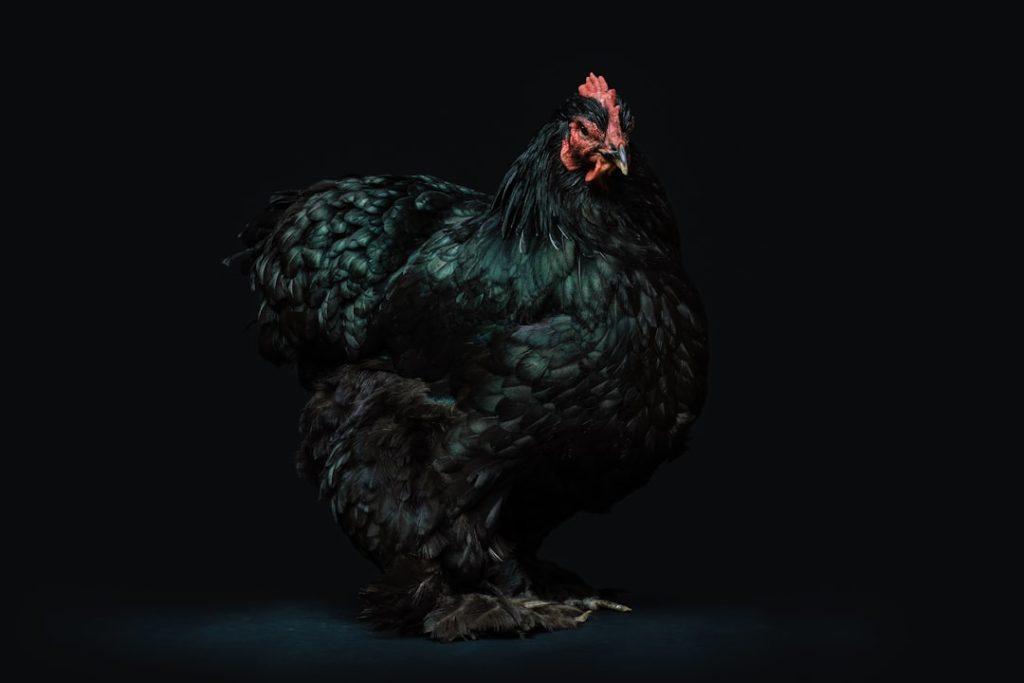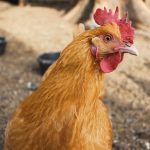The Wyandotte chicken breed originated in the late 1800s in New York, United States. It was developed by crossing several breeds, including Brahma, Hamburg, and Plymouth Rock, with the aim of creating a dual-purpose breed for both meat and egg production. The American Poultry Association officially recognized the Wyandotte breed in 1883.
Named after the Wyandotte Native American tribe to honor their contributions to American history, the breed quickly gained popularity across the United States. Farmers and homesteaders favored the Wyandotte for its hardiness, docile temperament, and excellent egg-laying abilities. Over time, breeders developed various color varieties of the Wyandotte, including Silver Laced, Golden Laced, Blue Laced Red, and Black.
The breed’s versatility and attractive appearance have contributed to its continued popularity among backyard poultry keepers and small-scale farmers in modern times.
Table of Contents
- 1 Characteristics and Physical Appearance
- 2 Selecting Breeding Stock
- 3 Breeding Methods
- 4 Incubation and Hatching
- 5 Caring for Wyandotte Chicks
- 6 Selling and Marketing Wyandotte Chickens
- 7 FAQs
- 7.1 What is the Wyandotte chicken breed?
- 7.2 What are the different varieties of Wyandotte chickens?
- 7.3 What are the characteristics of Wyandotte chickens?
- 7.4 How do you breed Wyandotte chickens?
- 7.5 What should I consider before breeding Wyandotte chickens?
- 7.6 What are some common health issues in Wyandotte chickens?
Key Takeaways
- Wyandotte chickens were developed in the United States in the 1870s and are named after the Wyandotte Native American tribe.
- They are known for their dual-purpose nature, being raised for both meat and eggs, and come in a variety of colors including silver laced, golden laced, and blue laced red.
- When selecting breeding stock, look for birds with good conformation, strong legs, and a broad, well-rounded body.
- Breeding methods for Wyandotte chickens include natural mating, artificial insemination, and selective breeding to maintain desired traits.
- Incubation and hatching of Wyandotte eggs typically takes 21 days, and chicks should be kept in a warm, clean environment with access to food and water.
Characteristics and Physical Appearance
Unique Physical Characteristics
The breed is known for its rose comb, which is a low, broad comb that sits close to the bird’s head. This unique comb type makes the Wyandotte chicken well-suited for cold climates, as it is less prone to frostbite compared to other comb types. Wyandottes have a short, close-fitting feathering that gives them a neat and tidy appearance.
Beautiful Plumage
One of the most notable features of the Wyandotte breed is its beautiful plumage. The Silver Laced variety, for example, has striking black and white feathers that are laced with silvery-white edging, giving the bird a stunning appearance. The Golden Laced variety, on the other hand, has rich golden-brown feathers with black lacing. The Blue Laced Red variety displays a unique blue coloration with red lacing, creating a visually appealing bird.
Temperament and Suitability
In addition to their attractive appearance, Wyandotte chickens are known for their friendly and docile temperament, making them an excellent choice for families and beginners in poultry keeping.
Selecting Breeding Stock

When selecting breeding stock for Wyandotte chickens, it is important to choose birds that exhibit the breed’s standard characteristics and traits. Look for birds with a broad, well-rounded body shape, a short and close-fitting feathering, and a well-developed rose comb. The plumage should also adhere to the specific color variety standards, whether it be Silver Laced, Golden Laced, Blue Laced Red, or Black.
It is important to select birds that are healthy, active, and free from any physical deformities or defects. In addition to physical characteristics, it is also important to consider the temperament and behavior of the breeding stock. Look for birds that are friendly, docile, and easy to handle.
This will not only make breeding and handling easier but will also ensure that the offspring inherit these desirable traits. When selecting breeding stock, it is also important to consider their egg-laying abilities and overall productivity. Choose birds that have a good track record of laying consistently and producing healthy offspring.
Breeding Methods
Breeding Wyandotte chickens can be done using several methods, including natural mating and artificial insemination. Natural mating involves allowing the roosters to mate freely with the hens in a natural setting. This method is simple and requires minimal intervention but may not always result in controlled breeding outcomes.
Artificial insemination, on the other hand, involves collecting semen from roosters and manually inseminating hens to achieve specific breeding goals. This method allows for controlled breeding outcomes and can be particularly useful for breeders looking to improve specific traits or characteristics within the breed. When breeding Wyandotte chickens, it is important to practice selective breeding to maintain and improve the breed’s standard characteristics.
This involves choosing breeding pairs that complement each other in terms of physical traits, temperament, and productivity. By carefully selecting breeding pairs based on these criteria, breeders can work towards producing offspring that meet the breed standard and exhibit desirable traits.
Incubation and Hatching
Once the eggs have been fertilized through natural mating or artificial insemination, they can be collected and placed in an incubator for hatching. The incubation period for Wyandotte eggs is approximately 21 days. During this time, it is important to maintain optimal temperature and humidity levels in the incubator to ensure successful hatching.
Turning the eggs regularly during incubation helps prevent the embryos from sticking to the shell membrane and promotes even development. After 21 days of incubation, the eggs will begin to hatch, and adorable Wyandotte chicks will emerge from their shells. It is important to provide a warm and safe environment for the newly hatched chicks, as they are particularly vulnerable during this time.
A brooder with a heat lamp or heating pad can provide the necessary warmth for the chicks, while clean bedding and access to fresh water and chick starter feed will ensure their health and well-being.
Caring for Wyandotte Chicks

Meeting Basic Needs
Caring for Wyandotte chicks requires attention to their basic needs for warmth, nutrition, and protection. Chicks should be kept in a brooder with a constant heat source to maintain their body temperature until they are fully feathered. Providing access to clean water and chick starter feed is essential for their growth and development.
Monitoring Health and Providing Space
It is important to monitor the chicks closely for any signs of illness or distress and provide appropriate care as needed. As the chicks grow, they will need space to move around and exercise. A larger brooder or outdoor pen can provide them with room to explore and develop their natural behaviors.
Maintaining a Healthy Environment
Regular cleaning of the brooder or pen is essential to maintain a healthy environment for the growing chicks. Additionally, providing enrichment such as perches or toys can help keep the chicks active and engaged.
Selling and Marketing Wyandotte Chickens
Once Wyandotte chicks have matured into pullets and cockerels, they can be sold to other poultry enthusiasts or farmers who are interested in raising this popular breed. Marketing Wyandotte chickens can be done through various channels, including online classifieds, social media platforms, or local poultry shows and auctions. Highlighting the breed’s desirable characteristics such as its attractive appearance, friendly temperament, and dual-purpose capabilities can help attract potential buyers.
When selling Wyandotte chickens, it is important to provide accurate information about the birds’ lineage, health history, and any specific traits or qualities that make them stand out. Offering quality birds that meet the breed standard and have been well-cared for will help build a positive reputation as a breeder or seller of Wyandotte chickens. In conclusion, Wyandotte chickens have a fascinating history and are known for their distinctive characteristics and attractive appearance.
Selecting breeding stock with care and practicing selective breeding methods can help maintain and improve the breed’s standard traits. Proper incubation and care for Wyandotte chicks are essential for their health and well-being. Selling and marketing Wyandotte chickens can be a rewarding endeavor for breeders who are passionate about this beloved breed.
If you’re interested in breeding Wyandotte chickens, you may also want to consider the importance of providing a heater for your chicken coop. This article discusses the benefits of using a heater to keep your chickens warm and comfortable during colder months, which can be crucial for successful breeding and egg production.
FAQs
What is the Wyandotte chicken breed?
The Wyandotte chicken breed is a popular dual-purpose breed known for its beautiful appearance, friendly temperament, and ability to lay a good number of eggs.
What are the different varieties of Wyandotte chickens?
Wyandotte chickens come in a variety of colors including Silver Laced, Golden Laced, Blue Laced Red, Black, White, Buff, and more. Each variety has its own unique and attractive plumage.
What are the characteristics of Wyandotte chickens?
Wyandotte chickens are known for their rounded, curvy bodies, rose combs, and clean legs. They are also known for their docile and friendly nature, making them great for backyard flocks.
How do you breed Wyandotte chickens?
Breeding Wyandotte chickens involves selecting healthy, high-quality breeding stock and providing them with a suitable environment for mating. It’s important to understand the breed standards and select birds that meet those standards.
What should I consider before breeding Wyandotte chickens?
Before breeding Wyandotte chickens, it’s important to consider the space and resources needed to care for the chicks, as well as the market demand for the specific variety of Wyandotte you plan to breed.
What are some common health issues in Wyandotte chickens?
Wyandotte chickens are generally hardy, but they can be prone to common poultry health issues such as respiratory infections, mites, and parasites. It’s important to provide them with a clean and healthy environment to prevent these issues.
Meet Walter, the feathered-friend fanatic of Florida! Nestled in the sunshine state, Walter struts through life with his feathered companions, clucking his way to happiness. With a coop that’s fancier than a five-star hotel, he’s the Don Juan of the chicken world. When he’s not teaching his hens to do the cha-cha, you’ll find him in a heated debate with his prized rooster, Sir Clucks-a-Lot. Walter’s poultry passion is no yolk; he’s the sunny-side-up guy you never knew you needed in your flock of friends!







